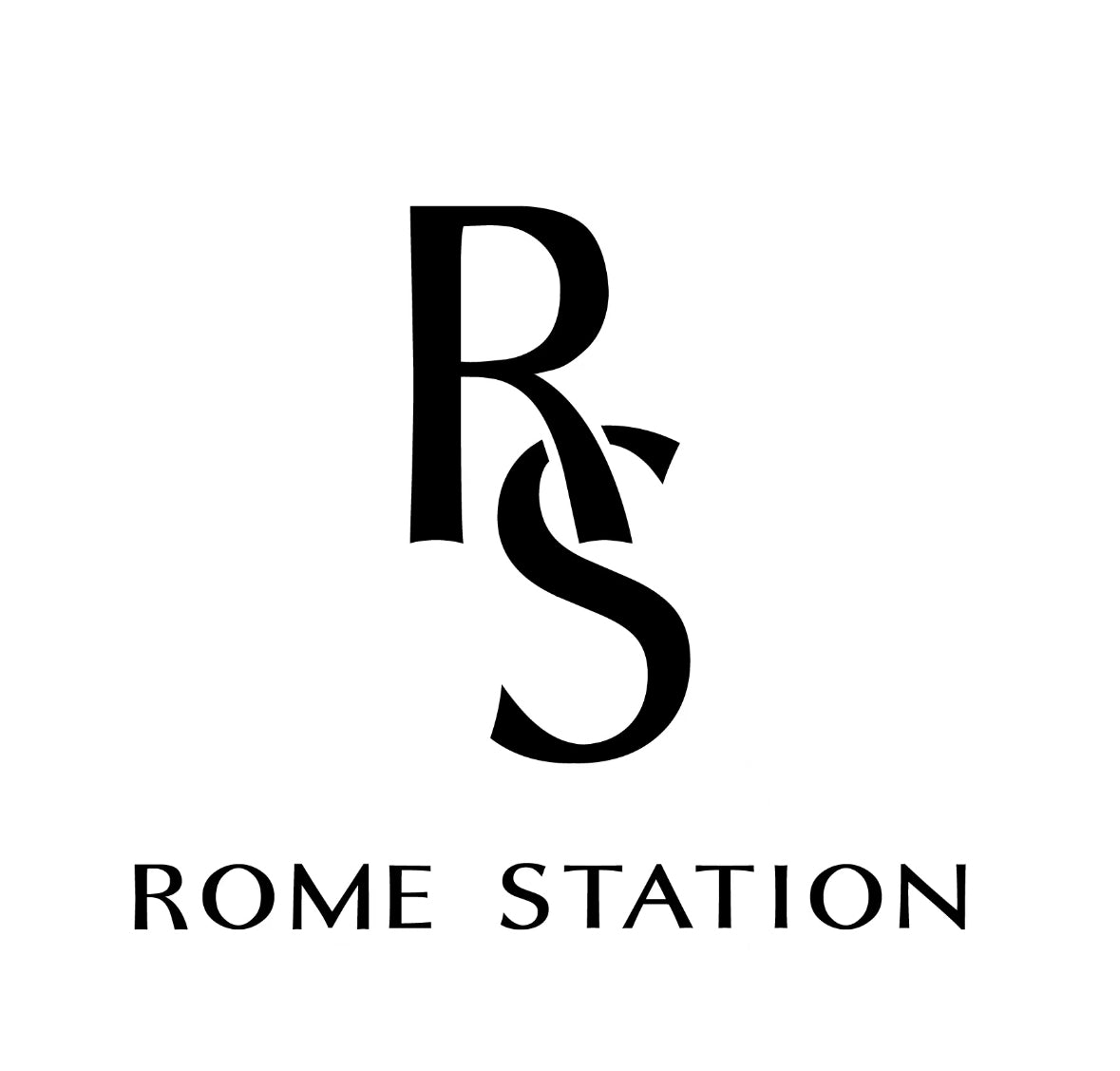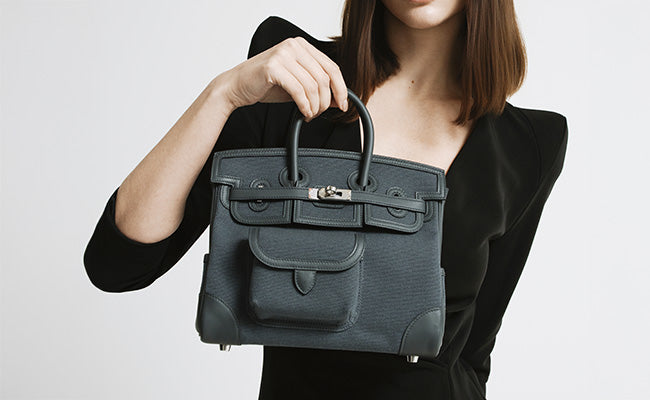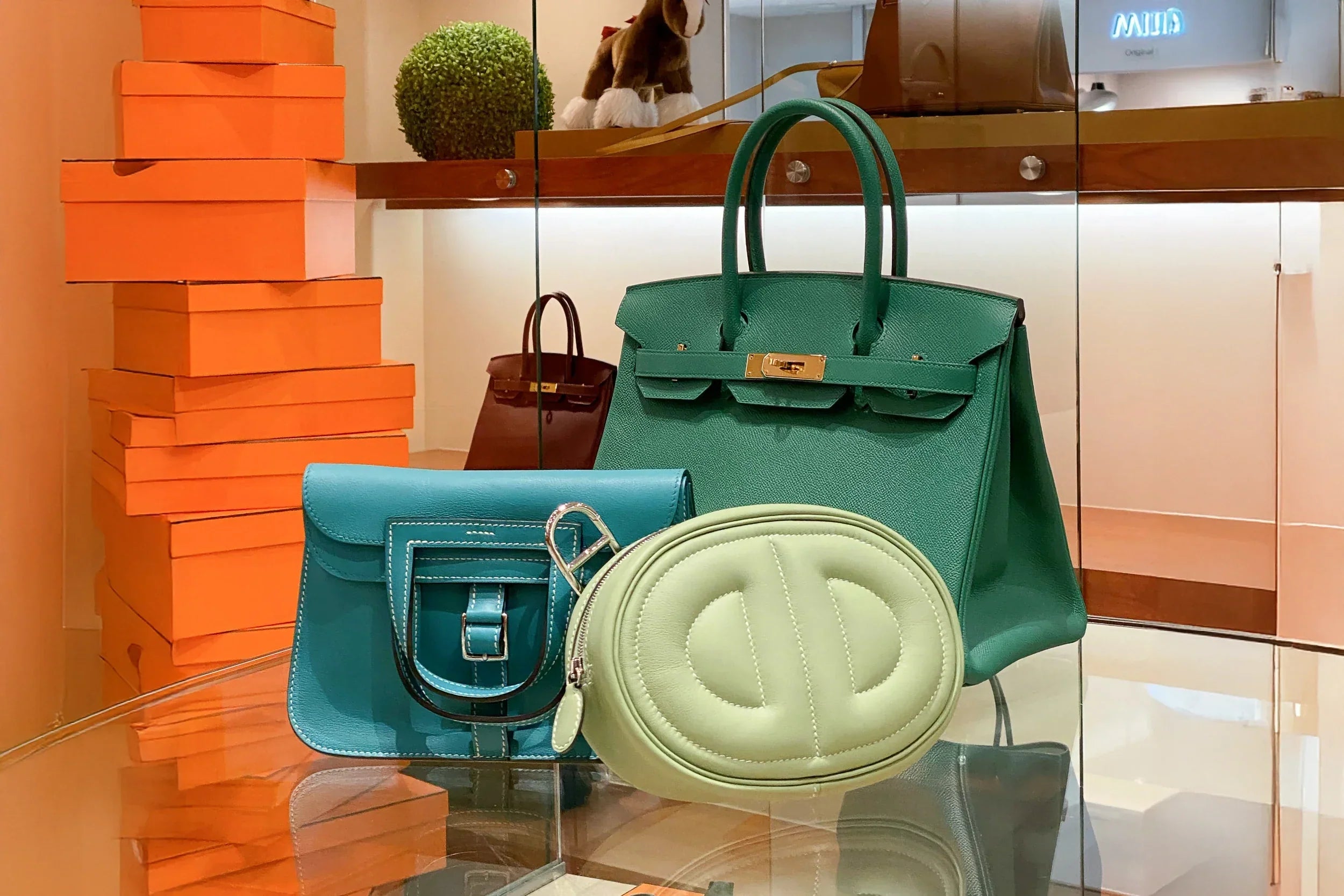
Why Hermès Makes It Difficult to Buy Bags and How to Overcome It
Check out our Hermès collection and Birkin bags!
Chasing a Hermès bag can feel like a luxury scavenger hunt, and honestly, that's no accident. Hermès makes it hard to buy their iconic bags on purpose, using scarcity, exclusivity, and strict purchasing rules to keep demand sky-high and protect the brand’s prestige. So, why do they do it, and more importantly, how can we navigate these hurdles to snag the bag of our dreams?
If you’ve ever strolled into a Hermès boutique hoping to just pick out a Birkin or Kelly, you know it’s never that simple. Behind every coveted Hermès release is a careful system focused on long-term customer loyalty, purchase history, and, let’s be real, building relationships with sales associates.
Getting one of these elusive bags takes more than just a fat wallet. Let's look at what actually works, what Hermès expects, and a few clever workarounds if you’re not up for the long haul.
Key Takeaways
- Hermès uses exclusivity to keep demand (and mystique) high
- Building real relationships in-store helps a lot
- The resale market and alternatives are out there if you’re impatient
The Hermès Bag Phenomenon
Hermès bags have basically redefined what luxury exclusivity means. Their reputation for rarity and status symbolism makes them a fascinating case.
Legendary Status of Hermès Bags
Hermès bags, especially the Birkin and Kelly, are icons, thanks to their history and insane craftsmanship. Each bag takes 18 to 24 hours to make, with a single artisan handling everything by hand. That obsessive attention to detail really does set them apart.
The stories behind the bags add to their allure. Jane Birkin’s run-in with Hermès’s CEO led to the Birkin bag; the Kelly became legendary after Grace Kelly used hers to dodge the paparazzi. These moments helped cement the bags’ place in pop culture.
Hermès keeps production low and distribution tightly controlled. Even if you walk in with the dream, the most sought-after models are rarely, if ever, on display.
Desirability and Social Currency
Owning a Hermès bag is like having a secret handshake. It signals more than just money, it’s about access, patience, and a real relationship with Hermès. For many, scoring a Birkin or Kelly is a status upgrade.
The scarcity creates a sense of competition and club membership. When someone sees you with one, they know you navigated the waitlists and charmed the right people. It’s not just a purchase; it’s a badge.
On social media and at exclusive events, Hermès bags are instantly recognizable. They spark conversation and, let’s be honest, a little envy. That visibility just keeps fueling the hype.
Impact on the Luxury Market
Hermès’s approach has shaken up the luxury world. Their refusal to discount, strict supply, and focus on heritage have set new standards. By selling fewer bags, they protect the brand’s aura and keep resale prices sky-high.
On the secondary market, Birkins and Kellys can go for two or three times their original price. That limited access drives a booming pre-owned market.
Other luxury brands have definitely taken notes, trying to recreate that blend of exclusivity and desirability. Hermès isn’t just selling bags, they’re shaping the whole ultra-luxury scene.
Why Hermès Makes Bags Hard to Buy
Hermès is famously picky about who gets their iconic bags. This isn’t random, tight production, selective sales, and careful client management are all part of the plan.
Strict Limited Production
Hermès makes a surprisingly small number of bags each year, even though demand is through the roof. Every bag is handmade in France by a single artisan, a process that can take over 18 hours, sometimes way longer for exotic leathers or custom work.
They keep production low on purpose, to maintain quality and keep things exclusive. Even regulars can face long waits. Scarcity keeps both prices and interest high.
Boutique Allocation Strategy
Hermès boutiques don’t just line their shelves with Birkins and Kellys. Each store gets a tiny allocation, and staff decide who gets offered what. Even sales staff might not know what’s coming until boxes show up.
A Toronto store might get just a few Birkins a month, and most of the best styles never see the sales floor. Bags usually go to loyal clients who’ve built a relationship and a purchase history across different categories, think scarves, jewelry, or shoes.
Getting offered a bag can feel as random as hitting the lottery. Building a relationship with your sales associate is usually the real secret.
The Art of Client Curation
Hermès takes client selection seriously. They reward long-term, loyal customers who buy across categories, not just people chasing status or quick flips.
Sales associates pay attention to what you buy, how you act, and even how you treat staff. Focusing only on bags can actually hurt your chances; showing interest in home goods, ready-to-wear, or equestrian items helps.
They want to build a community of passionate clients, not just make a sale. So, if you’re dreaming of a Birkin, it pays to show real interest in everything Hermès, not just the handbags.
Navigating the Hermès Experience
Scoring a Hermès bag is never as easy as just walking in and pointing. It’s about understanding the boutique’s vibe, building real relationships, and knowing what’s myth versus reality.
Understanding Boutique Etiquette
Hermès boutiques aren’t like most luxury stores. There’s no display case stacked with Birkins or Kellys. Sales associates greet you with respect, but they expect the same in return.
Don’t march in and demand a Birkin or Kelly. Show genuine interest in the brand, maybe check out the scarves, homeware, or shoes. Small talk and real enthusiasm for the craftsmanship can set the right tone.
Patience matters. If you come across as rushed or demanding, it can backfire. Your attitude often speaks louder than your shopping list.
Building a Relationship With Sales Associates
The bond with your sales associate (SA) is everything. Find someone you click with and try to stick with them. Consistency helps them remember your style and preferences.
SAs control limited stock and decide who gets first dibs. Being genuinely friendly, asking for updates, sharing your wishlist, or even sending an occasional email can keep you on their radar.
You don’t have to buy everything they suggest, just show you love the brand as a whole. It might take time, but patience often leads to a surprise offer.
Quick Tips
- Be curious and kind
- Visit regularly, but don’t overdo it
- Share stories about your Hermès favorites
The Myth of the Hermès Wishlist
You’ve probably heard about the “wishlist” system. In Canada, you can ask a sales associate to note your interest, but there’s no official public waitlist. SAs fill requests at their discretion, depending on availability.
Scoring a Birkin, Kelly, or Constance usually comes down to timing, luck, and your relationship with the SA. You might wait months, or longer, but persistence can help.
Be clear about your wishlist: mention size, color, hardware, but stay open-minded. Sometimes the bag you didn’t expect is the one you get offered. Flexibility can be a game-changer.
What Hermès Looks For in Buyers
When Hermès decides who gets the most coveted bags, it’s not just about your spending power. They look at your relationship with the brand and how you show appreciation beyond the purchase.
Purchase History and Brand Loyalty
Hermès cares about long-term connections. SAs look at how often you shop and what kinds of things you buy. You’re more likely to get offered a Birkin or Kelly if you’ve bought scarves, jewelry, ready-to-wear, or shoes, not just bags.
Shopping regularly and sticking with one store or associate helps. Some people keep detailed wishlists, but showing real interest in Hermès as a lifestyle leaves a stronger impression. Staff often note your non-bag purchases, so those Twilly scarves or bracelets can actually make a difference.
Here’s a quick breakdown of factors that matter:
| Factor | Impact |
|---|---|
| Variety of purchases | High |
| Purchase frequency | High |
| Boutique consistency | Moderate |
| Rare-item requests | Variable |
Personal Style and Engagement
Hermès is all about relationships, not just transactions. Associates notice your style and how you engage with the brand. You don’t have to show up in head-to-toe orange, but being genuinely enthusiastic and knowledgeable helps.
Sharing stories about your love for craftsmanship, or asking thoughtful questions, shows you care. Small gestures, like thank-you notes or attending events, can make you stand out.
It’s not just about spending; it’s about fitting in with the Hermès community. Bring your authentic self and show you appreciate the artistry. Passion for Hermès tends to open more doors than shopping alone.
How to Increase Your Chances of Getting a Hermès Bag
Getting a Hermès bag isn’t just luck, it’s about strategy, persistence, and a little creativity. Build relationships with sales associates and make smart choices about what and when you buy.
Developing a Purchase Profile
Your relationship with your favorite Hermès boutique matters. Staff keep tabs on your purchase history, preferences, and style. This “profile” shows you’re a genuine customer.
Building trust starts with regular visits and friendly chats. Buying a mix of products and sticking with your go-to SA can make you a familiar face. Sales associates are more likely to offer bags to people who are truly engaged with Hermès, not just chasing the hottest items.
Consistency isn’t just about spending big, it’s about enjoying the full Hermès experience. The more your profile reflects authentic interest, the better your odds.
Exploring Small Leather Goods and Accessories
Starting with small leather goods, scarves, belts, and homeware is a smart move. These items show your love for Hermès and help build your sales history and rapport with staff.
Check out these accessories:
| Item Type | Examples |
|---|---|
| Small Leather | Calvi card holders, wallets |
| Fashion | Twilly scarves, enamel bangles |
| Home Accessories | Porcelain, blankets |
Buying a range of goods shows you support the brand as a whole, not just the headline pieces. Associates notice when you appreciate the craftsmanship across the board.
Timing and Seasonality
Timing can make a difference. New bag deliveries and launches usually line up with fashion seasons, early spring, autumn, or the holidays.
Visiting the boutique during these times might put you in a good spot for new arrivals. Some people have better luck mid-week or during slower hours when staff can give you more attention.
Ask associates when new items are expected, or if certain products are coming soon. That kind of awareness, combined with polite persistence, sometimes means you’re the first to know when your dream bag lands.
Alternatives to Buying Directly From Hermès
Shopping for Hermès bags doesn’t have to mean playing by the boutique’s rules. There are trusted sources out there with authentic selections, each comes with its own perks and trade-offs.
Pre-Owned Luxury Boutiques
Pre-owned luxury boutiques in cities like Toronto or Montréal can be a goldmine for Hermès lovers. These shops handpick bags from trusted consignors and have experts check each one. Sometimes, you get to walk in and actually touch the leather, see the stitching, and chat with staff who know their stuff, year stamps, leathers, hardware quirks, you name it.
One big perk here? No waiting around. If there’s a Birkin or Kelly on the shelf, you can just buy it. Some places even let you do layaway or offer financing, though that varies. Prices usually match what’s hot in the market, so rare colors or styles might cost more than retail, but every now and then, you’ll spot a deal on something less hyped.
It’s smart to stick with shops that are upfront about returns and how they authenticate. The good ones provide original packaging, receipts, or a third-party certificate. Here’s a quick checklist for sizing up a boutique:
| Criteria | What to Check |
|---|---|
| Authentication | In-house or third-party verification |
| Return Policy | Clear terms on returns or exchanges |
| Provenance | Original receipts, dust bag, etc. |
| Staff Expertise | Knowledge of Hermès details |
Trusted Online Resale Platforms
Sites like Fashionphile, Vestiaire Collective, and The RealReal open up Hermès shopping to a global stage. Their inventories change daily, and it’s easy to filter by model, size, leather, or color. Each site has its own way of authenticating, so it’s worth double-checking before you buy.
Buying is pretty straightforward. Most platforms handle shipping and import fees, and some have “buy now, pay later” options or let you make offers below the asking price. User reviews can give you a sense of their customer service and how honest they are about bag condition.
For safety, never take the deal off-platform. Always look for a money-back authenticity guarantee and read every word in the condition notes. Good photos are non-negotiable, you want close-ups, full shots, and clear views of stamps and hardware. Established sites with a solid reputation really take the stress out of the hunt.
The Ethics and Realities of the Hermès Resale Market
The Hermès resale world has its own quirks, risks, and rewards. If you’re serious about collecting, you’ve got to get real about authenticity and pricing.
Bag Authenticity and Verification
When you’re shopping pre-owned, authenticity is everything. Birkin and Kelly bags are among the most counterfeited luxury items out there. Some fakes are scary good, they can even trip up long-time collectors.
To dodge fakes, you need expert authentication. Third-party specialists check the stitching, hardware, smell, stamps, even the dust bag. Some resellers work with in-house Hermès pros and might include a certificate.
Here’s a short checklist for verification:
- Examine craftsmanship: Stitching should be hand-done and flawless.
- Check date stamps and engravings: Hermès uses unique codes and artisan marks.
- Review hardware: Real bags use solid, weighty metal, never plated plastic.
Getting a second opinion? Always a good idea. It could save you a lot of money and stress.
Pricing Trends and Market Value
Resale prices for Hermès bags can be wild. Sometimes, Birkins or Kellys go for two or three times retail, especially rare colors, leathers, or special editions. Even bags with some wear can fetch a lot because demand just doesn’t quit.
Here’s what affects price:
| Factor | Impact on Price |
|---|---|
| Bag Type & Size | Smaller, classic sizes usually fetch more |
| Leather/Finish | Exotic leathers command higher prices |
| Colour | Rare or seasonal colours drive up value |
| Condition | Mint bags can get a premium |
| Full Set | Original packaging and receipt matter |
Prices jump around. A Himalayan Birkin might break $100,000, while a standard Togo Kelly in a neutral shade could hover near retail. The market is unpredictable, sometimes it’s hype, sometimes it’s real scarcity. Patience pays off, but so does knowing when to jump.
Cultural and Economic Factors Shaping Access
Getting your hands on a Hermès bag isn’t just about money or wanting one. Local culture and supply chains make a big difference in what’s available and how you buy.
Global Differences in Bag Availability
Bag access really depends on where you are. Paris flagship stores sometimes get more of the hot styles, while smaller city boutiques might only see certain colors or limited stock.
Customs, import taxes, and local rules all play a part. Here’s a quick look at how things shake out:
| Country | Availability | In-Store Selection | Waiting Lists |
|---|---|---|---|
| France | High | Broader | Sometimes required |
| Canada | Moderate | Selective | Common |
| Japan | Low | Strict allocations | Extremely common |
People talk a lot about “luck,” but honestly, it’s usually just different stock and sales tactics from one country to the next. Staff attitudes and how open they are to new buyers can feel totally different in Tokyo versus Toronto or Paris.
The Impact of Scarcity on Perception
Scarcity is baked right into the Hermès brand. Limited access turns these bags into status symbols, suddenly, they’re more than just something to carry your stuff in.
There’s a pecking order. Some folks get offered a Birkin after years of shopping, others wait even longer. That elusive vibe attracts not just die-hard fans, but also speculators hoping to cash in.
Bottom line? Carrying a Hermès bag says you’ve got patience, taste, and maybe a little luck. That exclusivity shapes not just what we wear, but how we talk and even dream about Hermès.
Frequently Asked Questions
Hermès bags are famously hard to get, and it’s not just about having the cash. The brand’s process is a mix of mystery, patience, connections, and a dash of luck.
What's the real deal behind the scarcity of Hermès bags?
Hermès doesn’t mass-produce Birkins and Kellys. Each bag is handmade by one artisan, and stores only get a few shipments a year.
They keep supply way below demand on purpose, which adds to the mystique. That’s why you almost never see bags on display.
Is there a secret formula to snagging a Birkin bag without the wait?
Honestly? No magic trick. Your best bet is to build a purchase history at one boutique and get to know a sales associate.
Timing and luck matter, too. Sometimes it’s just being there at the right moment.
What steps should one take to be considered for an Hermès bag purchase?
Start by visiting one Hermès store regularly and getting friendly with a sales associate. Buying other items, scarves, jewelry, ready-to-wear, doesn’t hurt.
Showing real interest and being patient helps you stand out to the staff.
Got deep pockets but can't buy a Birkin? Why is that a thing?
Money alone won’t cut it. Hermès wants to keep things exclusive, so they look for loyalty and genuine appreciation, not just a big spender.
They want ambassadors, not flippers.
Is the Herculean task of acquiring a custom Hermès bag worth the effort?
Custom, or “Horseshoe,” bags are all about personalization, but you need a long relationship with Hermès before you’re even considered.
For collectors and die-hard fans, the wait can be worth it. The journey’s part of the fun, even if it takes ages.
Do regular Joe's stand a chance at getting their hands on an Hermès masterpiece?
Well, technically, yeah. Anyone can stroll into a store and ask, but let’s be real, the chances get better if you’re a familiar, friendly face who actually supports the shop.
Every now and then, a first-timer gets lucky. For most of us, though? It’s probably going to take some patience and persistence.




